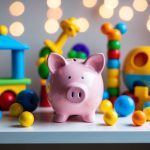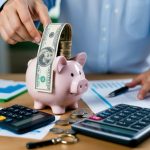Prevent Costly Repairs: Essential DIY Plumbing Maintenance Tips
Plumbing Maintenance Schedule
Creating a routine for plumbing maintenance can prevent unexpected problems and costly repairs. This involves setting a schedule that includes regular checks and adjustments, as well as special considerations for different seasons.
Creating a Maintenance Calendar
An effective maintenance calendar should incorporate monthly, quarterly, and annual checks. Monthly reviews can include looking for leaks under sinks and checking for slow drains that might signal clogs. Every quarter, inspect all visible pipes for signs of corrosion or leaks. Annually, examine and clean aerators on faucets to maintain water flow. Sediment buildup should be cleared from water heaters to enhance efficiency. Scheduling these tasks ensures regular attention to potential issues and promotes a proactive approach to home maintenance. Developing a calendar tailored to specific home needs enhances preventive measures.
Seasonal Plumbing Considerations
Different seasons require particular attention to plumbing systems. Winter calls for insulating exposed pipes to prevent freezing and bursting. During spring, check outdoor spigots and irrigation systems for winter damage. Summer offers a chance to examine water pressure in hoses and faucets, while fall involves gutter cleaning to prevent clogs. Adjusting maintenance tasks according to seasonal changes helps address weather-related vulnerabilities. This approach minimizes risks associated with each season and supports the longevity of plumbing systems. The careful monitoring of seasonal factors increases the effectiveness of a plumbing maintenance schedule.
Dealing with Plumbing Emergencies
Effective management of plumbing emergencies can prevent further damage and costly repairs. Quick responses to issues like burst pipes and major leaks are crucial.
Handling Burst Pipes
When a pipe bursts, immediate action is required to stop water flow and minimize damage. The first step is to locate and shut off the main water valve. This stops the water supply to the affected area, preventing further flooding.
Next, turn off the electricity if water is near electrical outlets to prevent danger. Use towels or a wet-dry vacuum to remove standing water. If the burst pipe is accessible, wrap a thick towel or a piece of rubber around it to minimize leakage. Secure it with a clamp until professional help is available.
Contacting a professional plumber for proper repair is essential to ensure the pipe is fixed correctly and prevent future issues.
Responding to Major Leaks
Major leaks can occur silently and suddenly, causing significant water damage if not addressed swiftly. Identifying the source is crucial, often involving checking connections under sinks, around appliances, or along visible pipes.
Tighten loose fittings or temporarily seal the leak with plumber’s tape as a short-term solution. If the leak is near essential areas like wooden floors or electrical wires, a swift response can mitigate extensive damage.
For substantial leaks, engaging plumbing services is necessary. Professional plumbers are equipped to diagnose the underlying issue, whether it’s a faulty joint or a broken seal, ensuring efficient and lasting repairs. Keeping contact information for a reliable plumbing service on hand is a wise preventative maintenance strategy for these situations.
Conservation and Cost Savings
Implementing water-saving strategies includes using efficient fixtures and adopting mindful habits. These approaches can significantly reduce water usage and lower expenses.
Installing Efficient Fixtures
Selecting efficient fixtures is an effective method for conserving water. Low-flow showerheads are a popular choice, allowing for a satisfying shower experience while using less water. Replacing old toilets with dual-flush models also contributes to savings. These fixtures use significantly less water per flush compared to older models. Additionally, consider aerators for faucets. They mix air with water, reducing flow without sacrificing pressure. Installing these fixtures potentially decreases water use and associated costs substantially.
Mindful Usage Habits
Adjusting daily habits can lead to noticeable savings. Encouraging shorter showers and turning off the tap while brushing teeth are simple but effective changes. Refraining from using harsh chemical drain cleaners can prevent long-term pipe damage. Regularly checking under sinks for leaks helps catch issues early, minimizing water waste and costly repairs. By adopting these habits, individuals not only conserve water but also save on utility bills over time.



